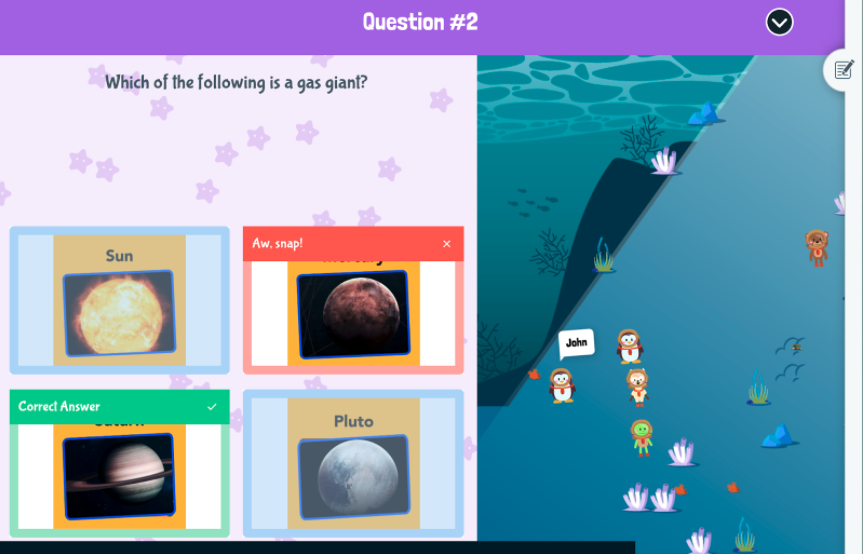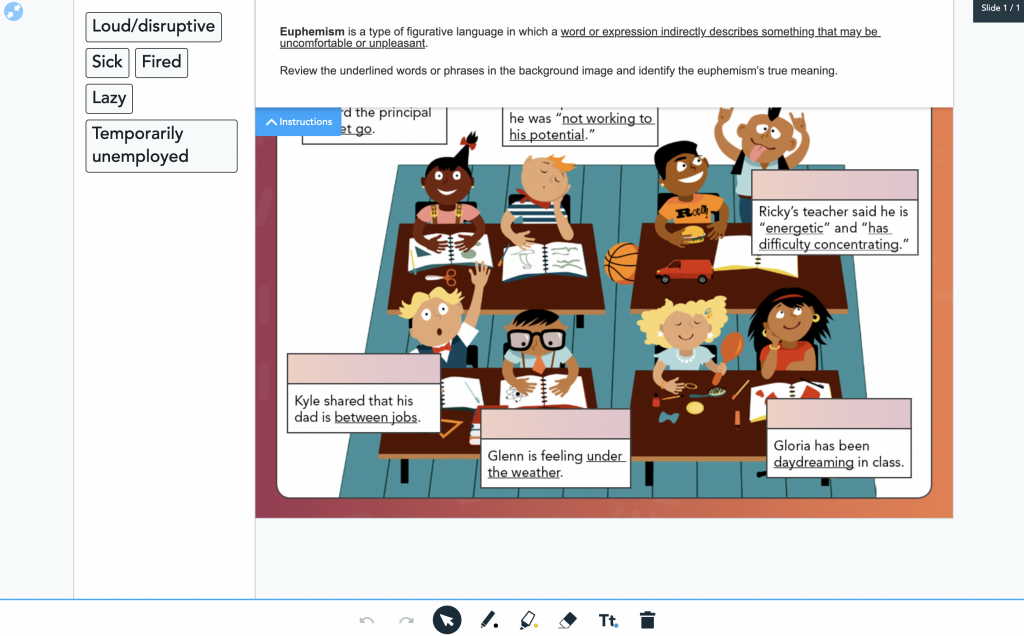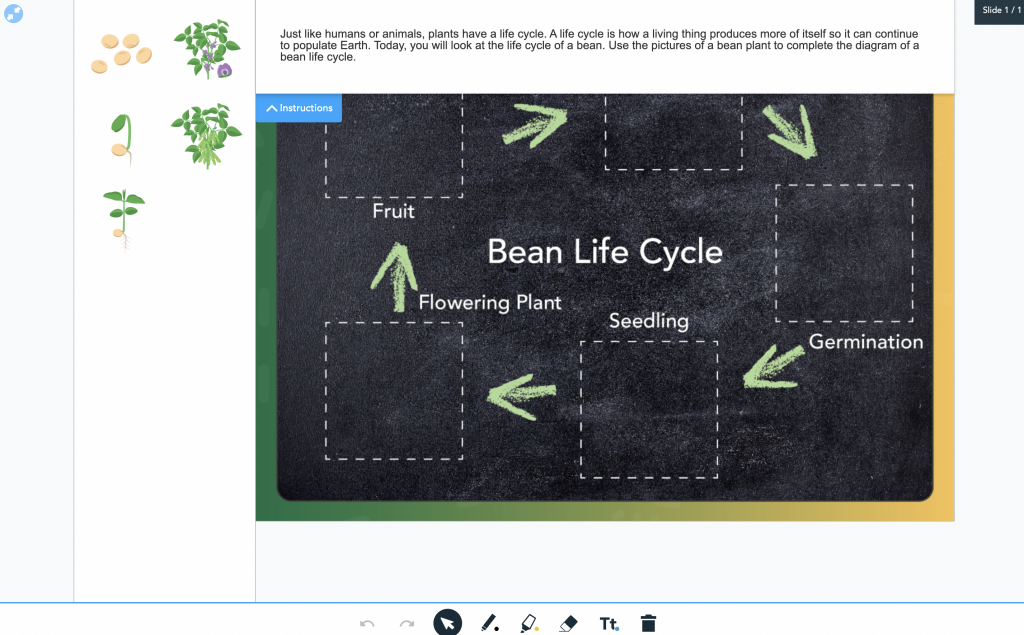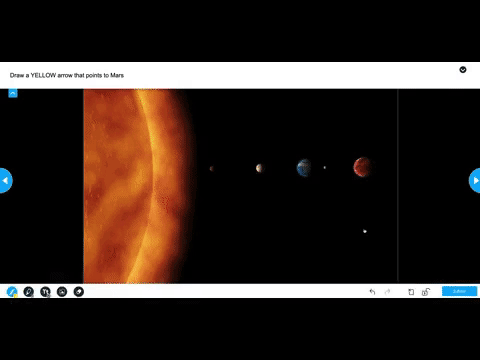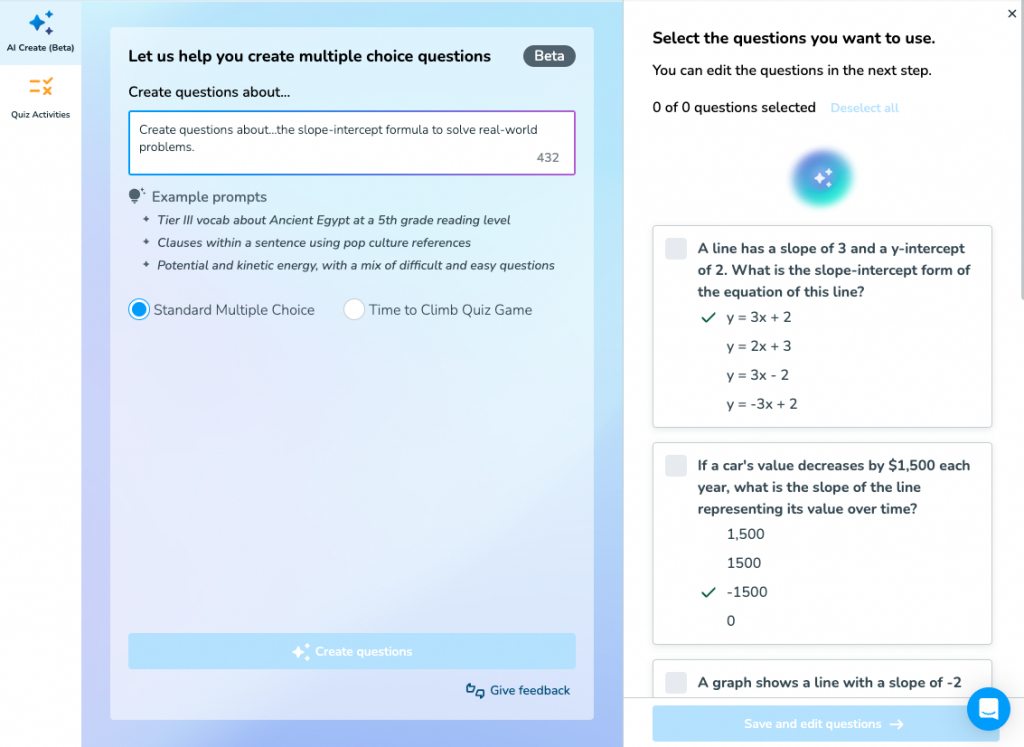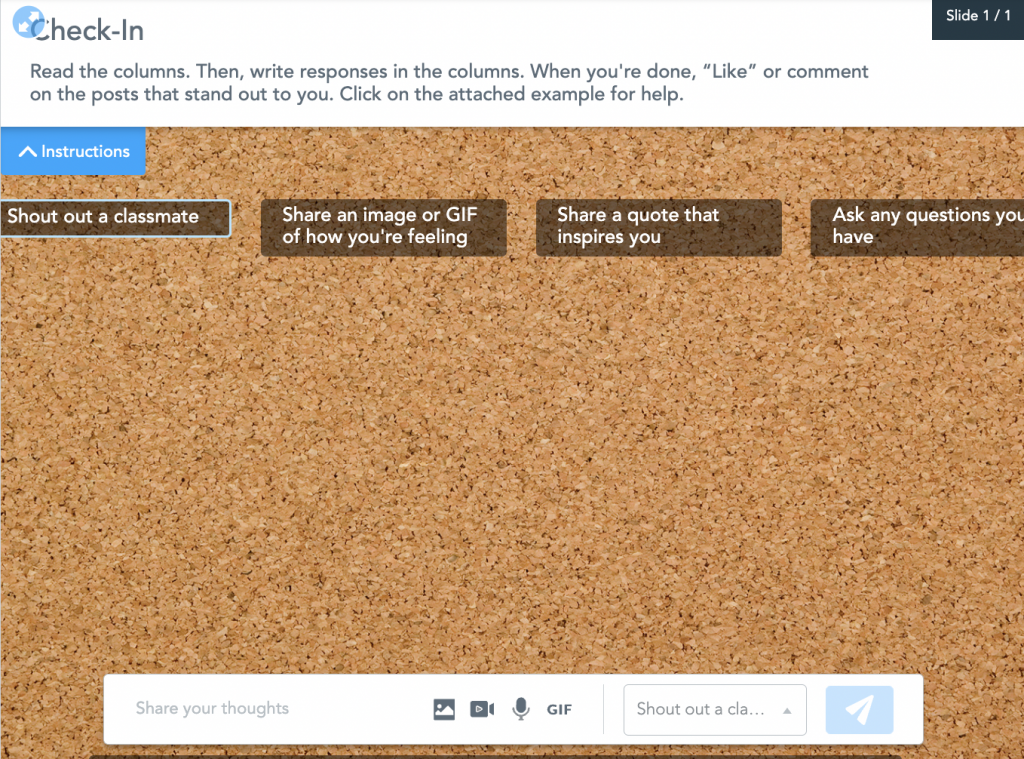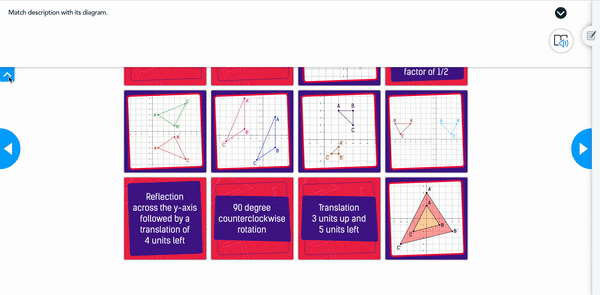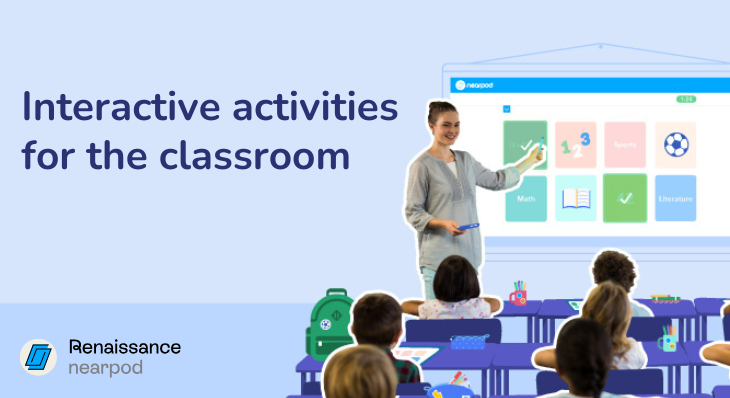
7 quick ways to use interactive classroom activities
Interactive classroom activities can help students develop critical thinking skills, give students more control over their learning, and increase engagement. Increased engagement can lead to increased learning gains and greater student retention of learning material. Additionally, learning retention can be increased when students are engaged in collaborative, peer-to-peer interactions. Here are 6 quick ways to use interactive classroom activities in the classroom.
Nearpod’s interactive activities in the classroom have the power to add interest and excitement to everyday learning. Using digital activities such as gamification, drag and drop, drawing, matching, and collaborative discussion enhances classroom learning for all students.
New to Nearpod? Teachers can sign up for a free Nearpod account below to access these resources, interactive activities, and engaging lessons. Administrators can schedule a call with an expert to unlock the full power of Nearpod for schools and districts.
What interactive activities keep learners engaged during a lesson?
Interactive activities keep students engaged by providing a creative and collaborative learning experience. With our growing options of Drag & Drop, Draw It, Time to Climb, Matching Pairs, Collaborate Board, Quiz, Poll, and Open-Ended Questions, teachers have multiple options to meet the specific needs of the diverse learners in their classrooms.
Activity Banks offer an ever-growing collection of ready-to-use engaging activities. With 2,000+ activities available, and hundreds more being added, there’s something to meet the needs of every classroom.
Our standards-aligned activities provide comprehensive opportunities for:
- Recalling prior knowledge
- Supporting a student’s learning progression
- Building an understanding of essential skills
- Collecting essential assessment data
7 quick ways to use interactive classroom activities
1. Use gamified interactive activities
Gamification keeps students engaged and alert! Not only does friendly competition and fun gameplay lead to increased participation, but it also motivates students to dig deeper into their learning. When used consistently, educational games can increase students’ social and emotional learning skills, such as problem-solving, collaborating with peers, behavior management, and more. Incorporating interactive games into your daily routine provides a structured yet enjoyable way for students to practice these important skills. Teachers can also get real-time insight into how students are doing while keeping them focused and smiling.
A student-favorite interactive classroom game on Nearpod is called Time to Climb. With this activity, you can assess understanding with a gamified multiple-choice quiz where students can race to the top of a mountain with their favorite characters.
2. Demonstrate steps, labels, and sorting with interactive diagrams
Captivate learners through problem-solving and critical-thinking activities. With interactive diagrams and models, students can show their understanding of the concepts being taught. Use these classroom activities to have them create timelines, outline steps, pair labels, and sort ideas into buckets to demonstrate what they learned.
Drag & Drop activities teach concepts in a fun and engaging way. Students can sequence events in a timeline and steps in a process, label diagrams, and models, or sort properties, categories, and characteristics. You can also create your own activity by uploading a background and inputting draggable text or images. Drag & Drop activities provide students with gamified learning opportunities and increased engagement and retention. As students physically engage with concepts, learning will be transformed within an interactive classroom environment. Using “think-pair-share” techniques alongside these activities gives students additional opportunities to check their understanding with classmates before submitting final answers.
Here are some Drag & Drop activities you can use in your classroom:
- Sort natural and manmade resources (Grades K-2)
- Showcase steps of the life cycle of a bean (Grades 3-5)
- Add, Subtract, Multiply, & Divide Decimals (Grades 6-8)
- Identify euphemism figurative language examples (Grades 9-12)
3. Provide opportunities for creative expression
Let students express themselves creatively through drawing. This could be on a blank sheet of paper, the board, canvas, or their devices. Having students draw on their devices can address common misconceptions as they work in real time, creating a truly adaptive, interactive classroom.
Our Draw It activities provide interactive tools for students to represent problem situations and a working space in which teachers can see in real-time the progression of student thinking as they write, draw, and record their thinking processes. Draw It activities are the perfect fit for teachers who want to see work in progress. It’s one of our most-used activities on Nearpod because it is easy for teachers to customize and collect student responses. You can create your own Draw It by creating a prompt for students, using a blank background or uploading your own, adding reference media if you please, and then having them complete the task on their own devices.
Here are some Draw It activities you can use in your classroom:
- Animals Preparing for Winter: (Grades K-2)
- Drawing Shapes: (Grades K-2)
- Template: Life Skills Cause & Effect (Grade K-2)
4. Create engaging assessments with AI Question Generator
Looking to quickly create engaging, high-quality assessment questions aligned with students’ learning needs? The AI Create Question Generator, available with Nearpod Gold and School or District licenses, transforms how you assess student learning. Simply enter a topic prompt like “photosynthesis for 5th graders” or ” slope-intercept formula to solve real-world problems,” and in seconds, you’ll have 10 standards-aligned multiple-choice questions ready to use in your interactive lessons.
This powerful tool allows you to differentiate assessments by customizing prompts for various reading levels or adding engaging references that capture student interest. By streamlining the assessment creation process, you can focus more energy on what truly matters—connecting with your students and creating those interactive learning moments that make your classroom come alive.
5. Prioritize classroom discussions
Encourage students to have discussions that create a rich dialogue. Creating opportunities where students discuss real-world applications of classroom material helps them connect these concepts to their own lives, significantly enhancing retention and understanding. Not only will this keep your students focused, but it will also help them practice social and emotional learning skills.
How can you ensure all students are participating and can be heard? Through our Collaborate Board, a group of students can share ideas with a larger audience as they begin their discovery on selected topics. With this feature, students can share their thoughts and ideas on an interactive digital board that’s moderated by the teacher. Teachers can support a whole-class discussion while ensuring all students’ ideas are heard and considered.
Here are some Collaborate Board lesson activities you can use in your classroom:
- Check-In (Grades 2-12)
- Which Doesn’t Belong: Reptiles & Amphibians: (Grades 1-5)
- Would You Rather: Run or Fly (Grades 3-5)
- All About Fictional Characters (Grades 6-12)
6. Matching activities for students to self-asses
It’s important for students to assess themselves to see how they’re understanding the lesson. Our Matching Pairs activities guide students in thinking through processes, demonstrate student understanding, and provide accessibility for visual learners. With this activity, students can match two cards that pair together. They are given instant feedback to allow for opportunities to self-assess and guide students in refining and revising their thinking. In the end, you’ll be able to see how many tries it took for them to get the correct answers. Teachers can create their own Matching Pairs with just a few clicks on Nearpod and add a time limit with the timer!
Here are some Matching Pairs engaging classroom activities:
- Match Seasons and Weather (Kindergarten)
- Internet Vocabulary Grades (K-5)
- Narrative Writing: Text Examples (Grade 6)
- Trigonometric Ratios: Matching (Grades 9-10)
7. Keep students focused by launching activities on-the-fly
Through our Quick Launch feature, teachers can add learning games and activities to drive adaptive teaching and differentiated, personalized instructional decision-making that accelerates learning for all. Teachers can use Quick Launch to launch an Open-Ended Question, Collaborate Board, or Timer!
Use Quick Launch for learning fun moments to create a quick exit ticket, bell ringer, or do-now. You can also consider using this for those in-the-moment sparks of inspiration or when you’re trying to get students’ attention back to a lesson. These spontaneous activities also serve as excellent team building opportunities.
Sign up for free to use these interactive classroom activities
Increase transformative learning in your classroom through these tips. As features and tools become more engaging, teachers have the ability to design learning experiences that are more effective, interactive, and personalized. Use Nearpod’s collection of features to create an interactive classroom where student learning comes first truly!
New to Nearpod? Teachers can sign up for a free Nearpod account below to access these resources, interactive activities, and engaging lessons. Administrators can schedule a call with an expert to unlock the full power of Nearpod for schools and districts.

Jessica Clarke is the Curriculum Manager at Nearpod.
